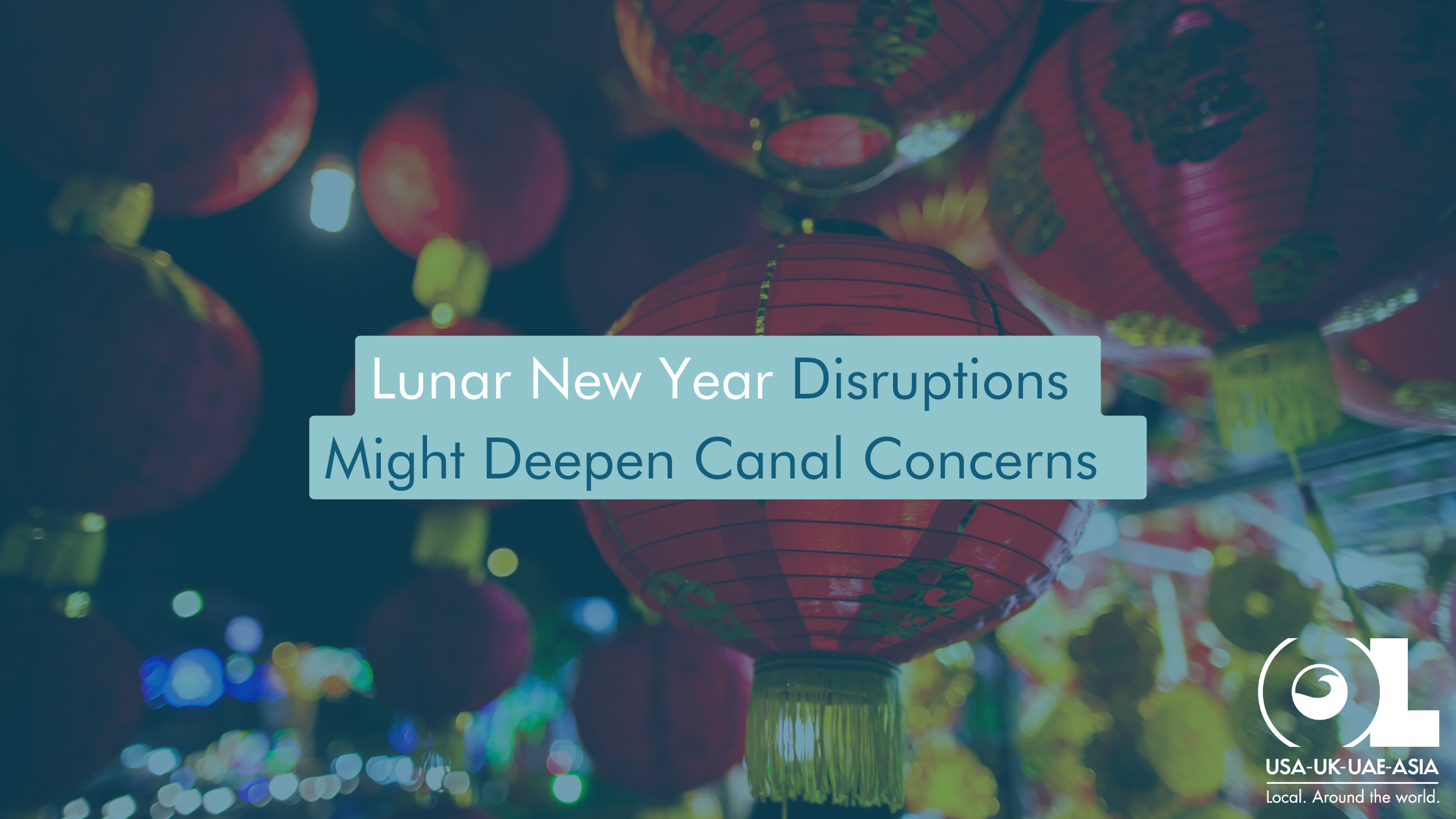Lunar New Year, also known as Chinese New Year or Spring Festival, marks the beginning of the lunar calendar year in many Asian cultures. It’s a time of joyous celebration, family gatherings, and centuries-old traditions. Each year is associated with one of the twelve animals in the Chinese zodiac, adding a unique flavor to the festivities.
Significance in Asian Cultures
Lunar New Year holds immense cultural significance across Asia, not just as a time for merriment but also as a period of deep-rooted traditions and beliefs. Families come together to honor ancestors, exchange gifts, and partake in elaborate feasts. Streets burst with vibrant decorations, fireworks light up the sky, and dragon dances captivate spectators, symbolizing luck and prosperity for the year ahead.
Navigating Lunar New Year 2024: A Guide for Businesses
As we approach Lunar New Year 2024, businesses engaged in international trade face both challenges and opportunities. At OL, our aim is to assist current and potential customers in navigating these intricacies effectively. Let’s delve into how this upcoming Lunar New Year may impact your supply chain and how you can prepare to mitigate any disruptions.
The Impact of Lunar New Year on Factories and Ports
As the Lunar New Year approaches, one of the most significant impacts seen across Asia, particularly in powerhouse economies like China, is the winding down of industrial activities. Let’s delve into why this happens and what it means for global trade.
Traditional Shutdowns and Slowdowns
During Lunar New Year, it’s customary for factories and businesses to close their doors, allowing employees to return home and celebrate with their families. This mass migration, often referred to as Chunyun, is considered the largest annual human migration in the world. In a region where family ties are deeply valued, this time away from work is non-negotiable for most employees.
The impact? Major manufacturing hubs slow down considerably or come to a complete halt. This includes factories, warehouses, and even the bustling ports that are lifelines for global shipping. The result is a significant slowdown in production and a temporary pause in the export of goods.
Historical Trends and Data
Looking at past Lunar New Years, we can draw some valuable insights. Historically, factory shutdowns can begin a week before the actual holiday and extend a week or two after. In some cases, the total downtime can span up to a month, depending on the region and specific industry practices.
For instance, during the Lunar New Year of 2021, despite the pandemic’s impact, there was a noticeable dip in manufacturing output across major Chinese industrial sectors. Port activity in Shanghai and Shenzhen saw a reduction of nearly 20% in container handling during the festival period. This slowdown had a cascading effect on global supply chains, leading to longer lead times and increased shipping costs.
In 2022, the trend continued with a similar pattern, though with slight improvements in recovery time post-holiday, thanks to better pandemic management and more resilient supply chain strategies adopted by businesses worldwide.
What Does This Mean for Your Business?
Understanding these historical trends is crucial for any business involved in international trade. The Lunar New Year period is not just a cultural phenomenon but a pivotal economic event that requires strategic planning and adaptation. By looking at the patterns from previous years, businesses can better forecast potential delays, adjust their inventory management, and communicate effectively with suppliers and customers to minimize disruptions.
Anticipated Changes in Shipping Schedules and Manufacturing Outputs
As Lunar New Year 2024 approaches, businesses engaged in global trade must brace themselves for significant disruptions in shipping schedules and manufacturing outputs. This year, however, the challenges are compounded by additional factors such as restricted access to crucial maritime routes. Let’s explore what to expect:
Impact on Shipping Schedules
With the closure of factories and ports across Asia during Lunar New Year, there will inevitably be a bottleneck in shipping activities. Vessels will face delays in loading and unloading cargo, leading to longer transit times and congested ports. Moreover, the recent developments in maritime geopolitics, such as the inaccessibility of the Red Sea and limited traffic through the Panama Canal, will further exacerbate the situation.
Manufacturing Slowdowns
The traditional shutdown of factories in major manufacturing hubs like China, South Korea, and Vietnam will result in a significant decrease in manufacturing outputs. Production lines will halt, and workers will take time off to celebrate the festive season with their loved ones. As a result, businesses relying on these manufacturing centers for their supply chain will experience disruptions in their production schedules.
Potential Delays in Production and Supply Chains
The ripple effects of these disruptions will be felt throughout global supply chains. Potential delays in production mean that orders may not be fulfilled on time, leading to inventory shortages and backlogs. Businesses may struggle to meet customer demands, resulting in lost sales and damaged relationships. Moreover, the restricted access to key maritime routes will further hamper the movement of goods, exacerbating the situation.
Insights from Past Years
Looking back at previous Lunar New Year periods, we can glean insights into the duration of disruptions. Typically, the slowdown in manufacturing and shipping activities can last anywhere from a few weeks to a couple of months. However, with the additional challenges posed by geopolitical factors this year, it’s reasonable to anticipate prolonged disruptions.
In past years, businesses that were proactive in their planning and preparation were better equipped to weather the storm. By adjusting their production schedules, optimizing inventory levels, and diversifying their supply chain routes, they were able to mitigate the impact of Lunar New Year disruptions more effectively.
As we gear up for Lunar New Year 2024, businesses must be vigilant and proactive in their approach to supply chain management. By anticipating changes in shipping schedules and manufacturing outputs, preparing for potential delays, and drawing insights from past years, businesses can navigate the challenges presented by this festive season with resilience and agility. Partnering with a reliable 3PL provider can offer solutions to mitigate the impact of Lunar New Year disruptions.



